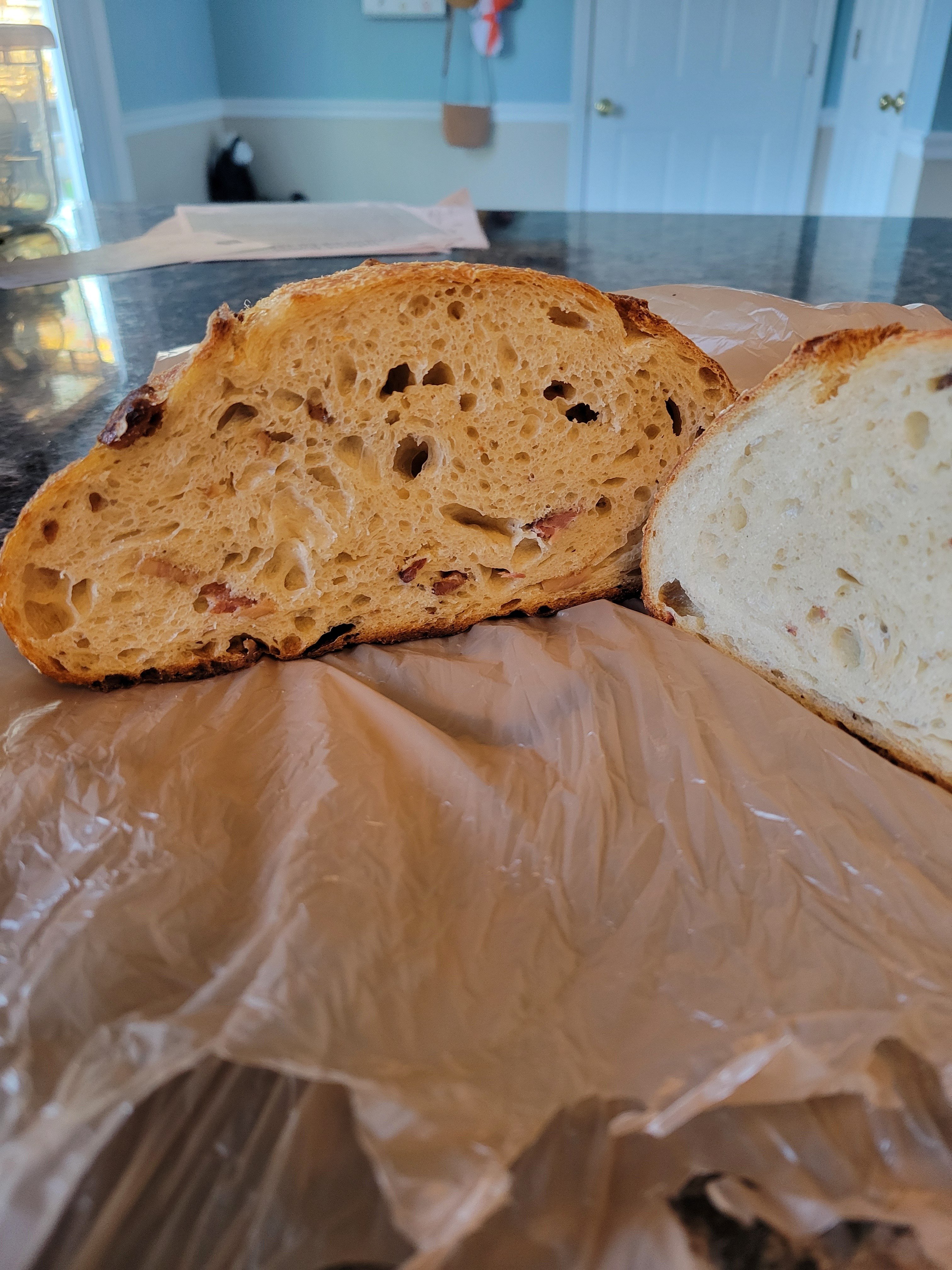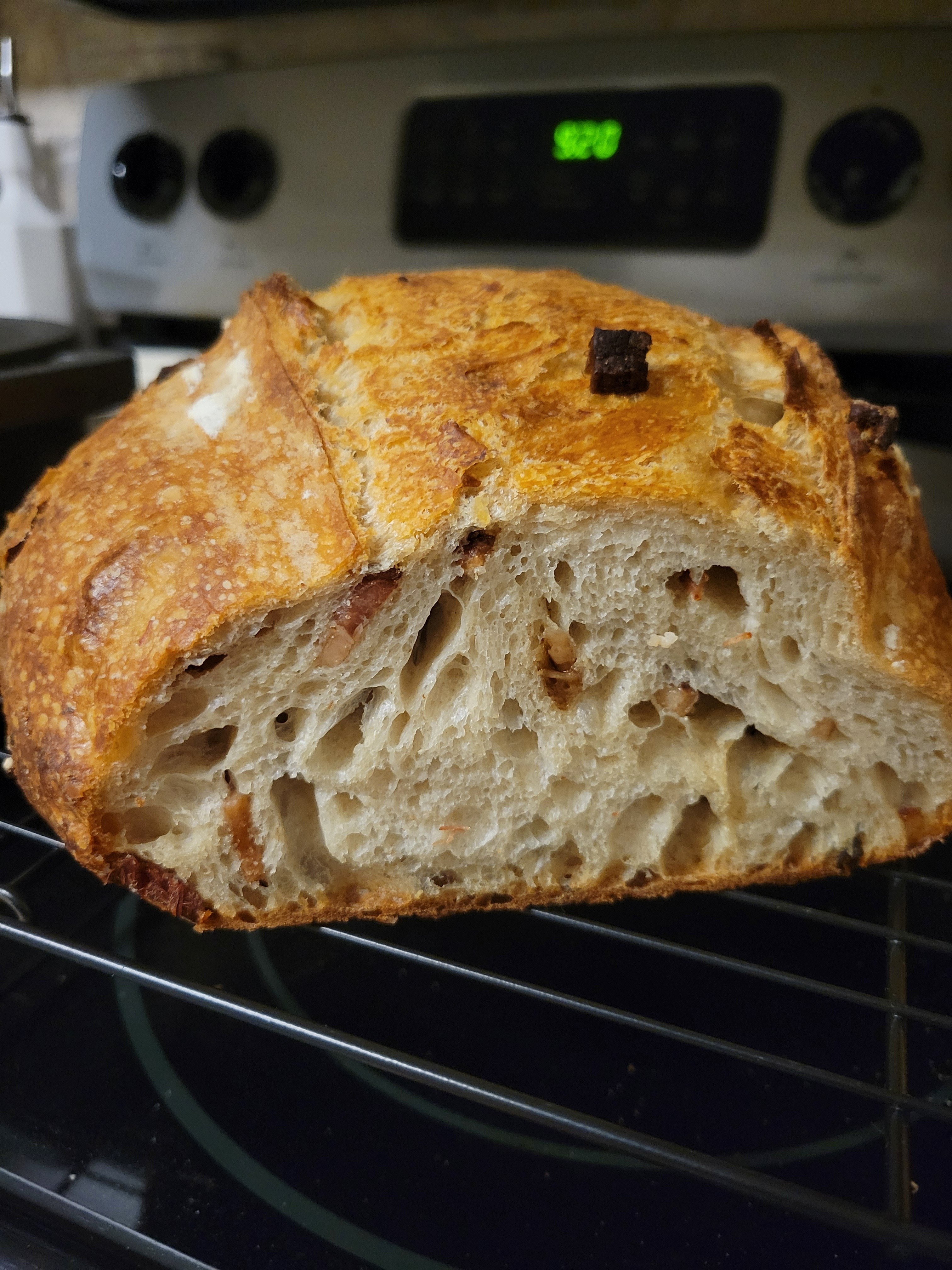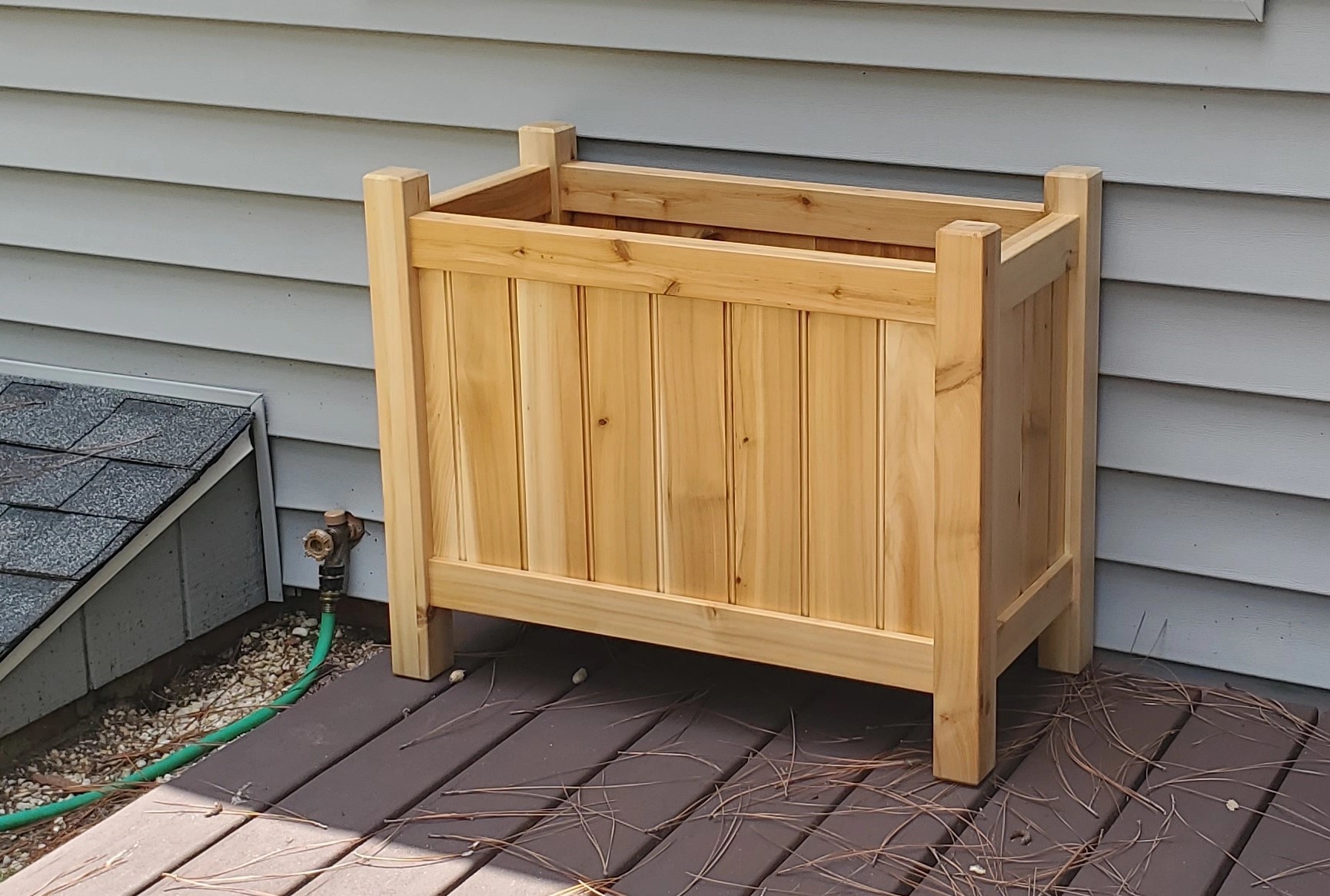

Yeah, ‘sweet’ is definitely over the top, but it’s hard to convey the specific smell of a young, active, recently fed starter, so I get why he went with it
I’ve never heard of that levain, but my sourdough experience is almost exclusively regular bread






Not a perfectly distributed crumb, but considering how gassy it was after the bulk ferment ran away, I’m happy with it